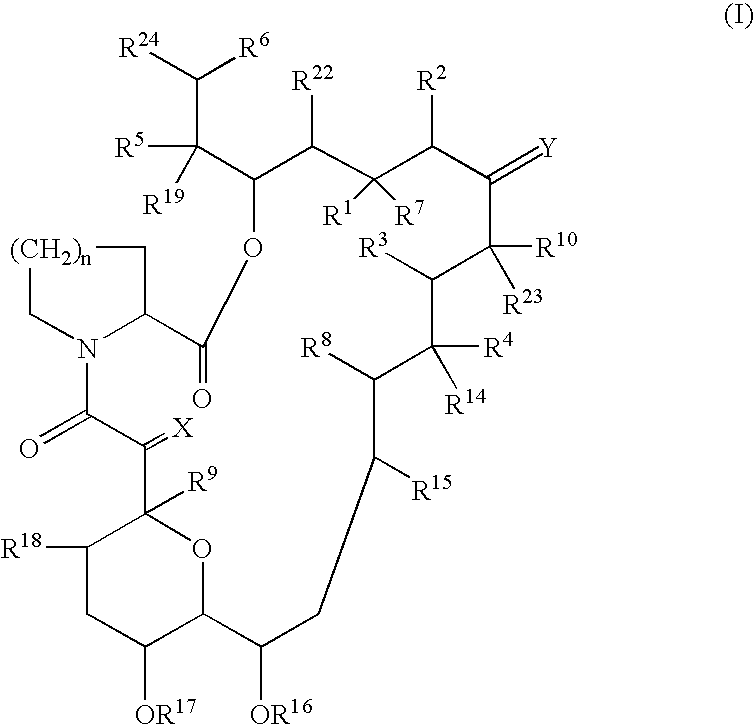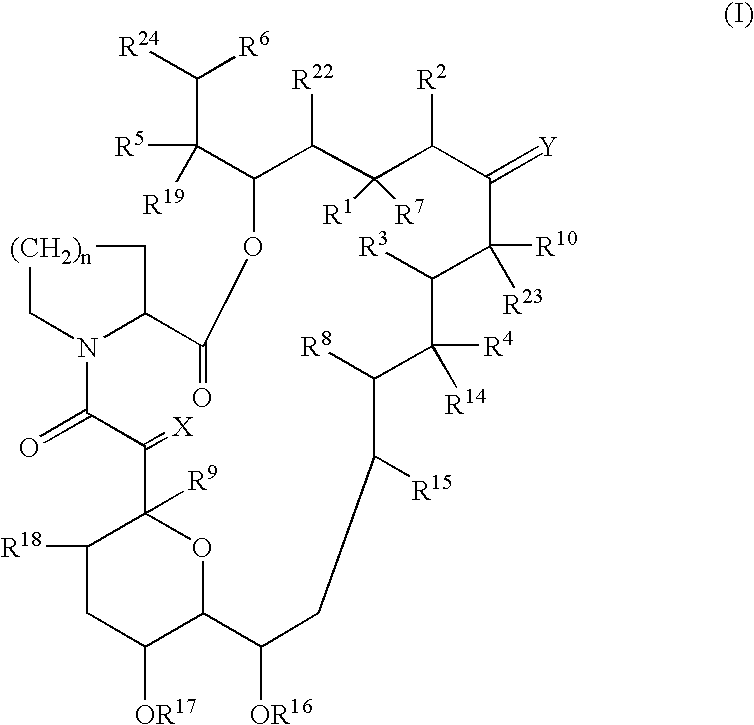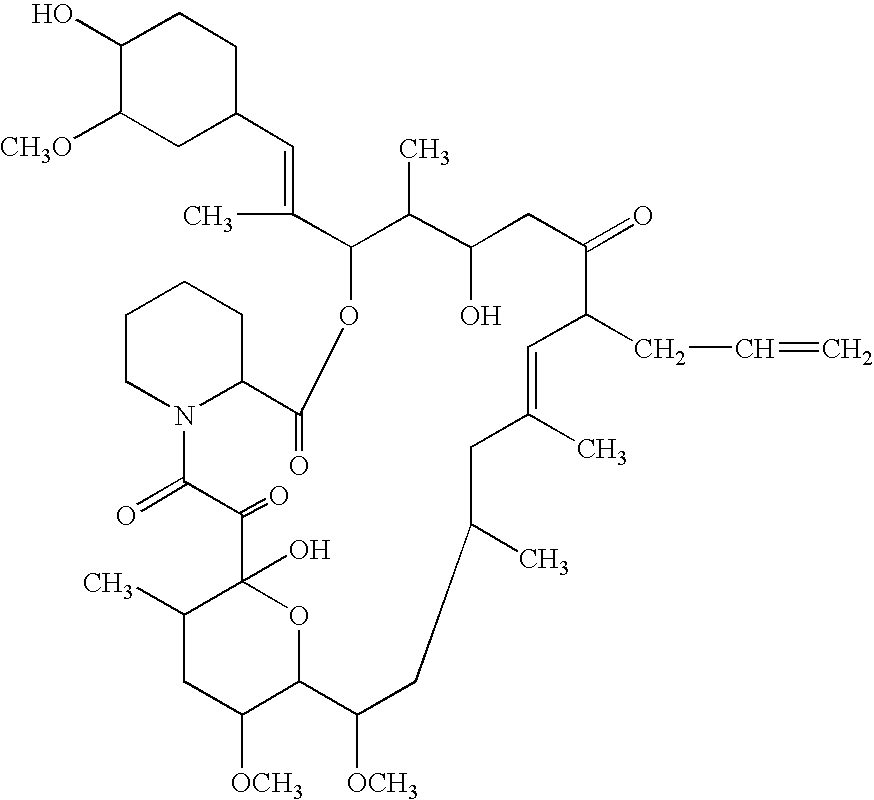Use of macrolide compounds for the treatment of dry eye
a macrolide compound and dry eye technology, applied in the field of dry eye agents, can solve the problems of unsatisfactory undetermined effect of such therapy, and dry eye symptoms, and achieve the effect of superior improvement of dry eye symptoms and superior treatment
- Summary
- Abstract
- Description
- Claims
- Application Information
AI Technical Summary
Benefits of technology
Problems solved by technology
Method used
Image
Examples
example 1
[0079]Using FK506 as the active ingredient in the present invention, a 0.06% eye drop (suspension) having the following formulation was used as a test drug.
Test drug
[0080]A suspension having the following formulation was produced in the same manner as in EP-A-0406791 (Example 6).
[0081]
FK506 0.6 mgpolyvinyl alcohol 7.0 mgdisodium hydrogenphosphate 12 hydrate0.05 mgsodium dihydrogenphosphate 2 hydrate0.76 mgphosphoric acidappropriate amountsodium hydroxideappropriate amountsodium chloride8.56 mgbenzalkonium chloride 0.1 mginjectable waterappropriate amountTotal amount1 ml
[0082]The above-mentioned test drug was consecutively administered twice a day for two weeks to a male (44 years old) having subjective symptoms of dry eye (sense of dryness, foreign body and grittiness) and, as a result, the subjective symptoms disappeared.
[0083]From the above result, the test drug was confirmed to be effective for the improvement of subjective symptoms of dry eye.
example 2
[0084]A suspension having the same formulation as in Example 1 was produced using FK506 as the active ingredient to give a 0.01% FK506 eye drop (suspension) and 0.1% FK506 eye drop (suspension) as test drugs. The base for the eye drops was used as the control drug.
[0085]The above-mentioned test drugs and the control drug were instilled four times a day for 7 days to 18 healthy subjects (6 per group) at 8:00, 11:00, 14:00 and 17:00.
[0086]The tear film breakup time (sec) of the right eye was measured before instillation and 8 days after instillation. The difference between before and after the instillation was calculated, and taken as the mean variation of the tear film breakup time.
[0087]The tear film breakup time was measured according to the conventional method. After instillation of fluorescein, the tear film was formed on the surface of the eye by nictitation. The surface of the eye was observed with a microscope without allowing nictitation, and the time until breakage of the te...
PUM
| Property | Measurement | Unit |
|---|---|---|
| breakup time | aaaaa | aaaaa |
| stability | aaaaa | aaaaa |
| breakup time | aaaaa | aaaaa |
Abstract
Description
Claims
Application Information
 Login to View More
Login to View More - R&D
- Intellectual Property
- Life Sciences
- Materials
- Tech Scout
- Unparalleled Data Quality
- Higher Quality Content
- 60% Fewer Hallucinations
Browse by: Latest US Patents, China's latest patents, Technical Efficacy Thesaurus, Application Domain, Technology Topic, Popular Technical Reports.
© 2025 PatSnap. All rights reserved.Legal|Privacy policy|Modern Slavery Act Transparency Statement|Sitemap|About US| Contact US: help@patsnap.com



